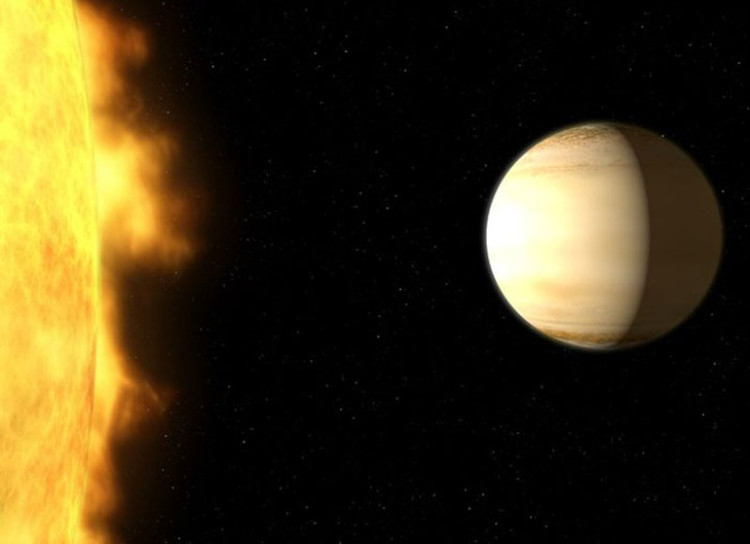Discovering the planet has three times the amount of Saturn
Scientists at the US Aeronautics Agency (NASA) discovered the planet WASP-39b, located 700 light-years away from Earth, containing a huge amount of water in the form of vapor in the atmosphere, nearly three times the amount of water. on Saturn.
They used the Hubble space telescope and the Spitzer telescope to create a detailed spectrum of the WASP-39b atmosphere, allowing for evidence of water's existence. Extraterrestrial WASP-39b has the same mass as Saturn.
However, unlike in the solar system, WASP-39b does not have a belt system. WASP-39b completed an orbit around the host star for 4 days. This alien planet is closer to its host star than 20 times the distance between the Earth and the Sun.

Alien WASP-39b is located 700 light-years from Earth.(Photo: NASA).
The huge amount of water found on WASP-39b makes scientists think that this planet has a history of differentiation from other crystals. According to NASA, the large amount of water present on WASP-39b shows that the planet could form away from the host star, where it was violently bombarded by ice-like matter.
The researchers also believe that WASP-39b has the ability to move deep into its planetary system, eliminating many planet-like bodies on the way to its present location. The evolution of WASP-39b can help us better understand the history of planets in the solar system."We need to look outside to understand our Solar System ," said Hannah Wakeford, a researcher at the University of Exeter.
WASP-39b is, meaning that one side of the planet is always facing the star. The planet's daytime temperatures rise to 776.7 degrees Celsius. Strong winds carry heat from the daytime surface across the planet, making the nighttime face very hot.
Once NASA goes into operation (due to be launched in 2019), Wakeford hopes to use it to obtain a more detailed spectral image of WASP-39b. This will help researchers find out how WASP-39b is formed.
- Overview of Saturn
- Cassini spacecraft said the latest information
- NASA spacecraft flew past Saturn for the last time before committing suicide
- The truth after each name of the familiar planets
- Discovering new planets is 13 times larger than Jupiter
- What's interesting on Saturn?
- 1000 tons of diamonds poured down on Saturn and Jupiter every year
- Discover a new planet 13 times larger than Jupiter
- The most beautiful planet of the Solar System through the lens of the Cassini ship
- Saturn changes color seasonally
- Determine the true age of Saturn's belt
- Discovering a small planet like Earth
 Van Allen's belt and evidence that the Apollo 11 mission to the Moon was myth
Van Allen's belt and evidence that the Apollo 11 mission to the Moon was myth The levels of civilization in the universe (Kardashev scale)
The levels of civilization in the universe (Kardashev scale) Today Mars, the sun and the Earth are aligned
Today Mars, the sun and the Earth are aligned The Amazon owner announced a secret plan to build a space base for thousands of people
The Amazon owner announced a secret plan to build a space base for thousands of people